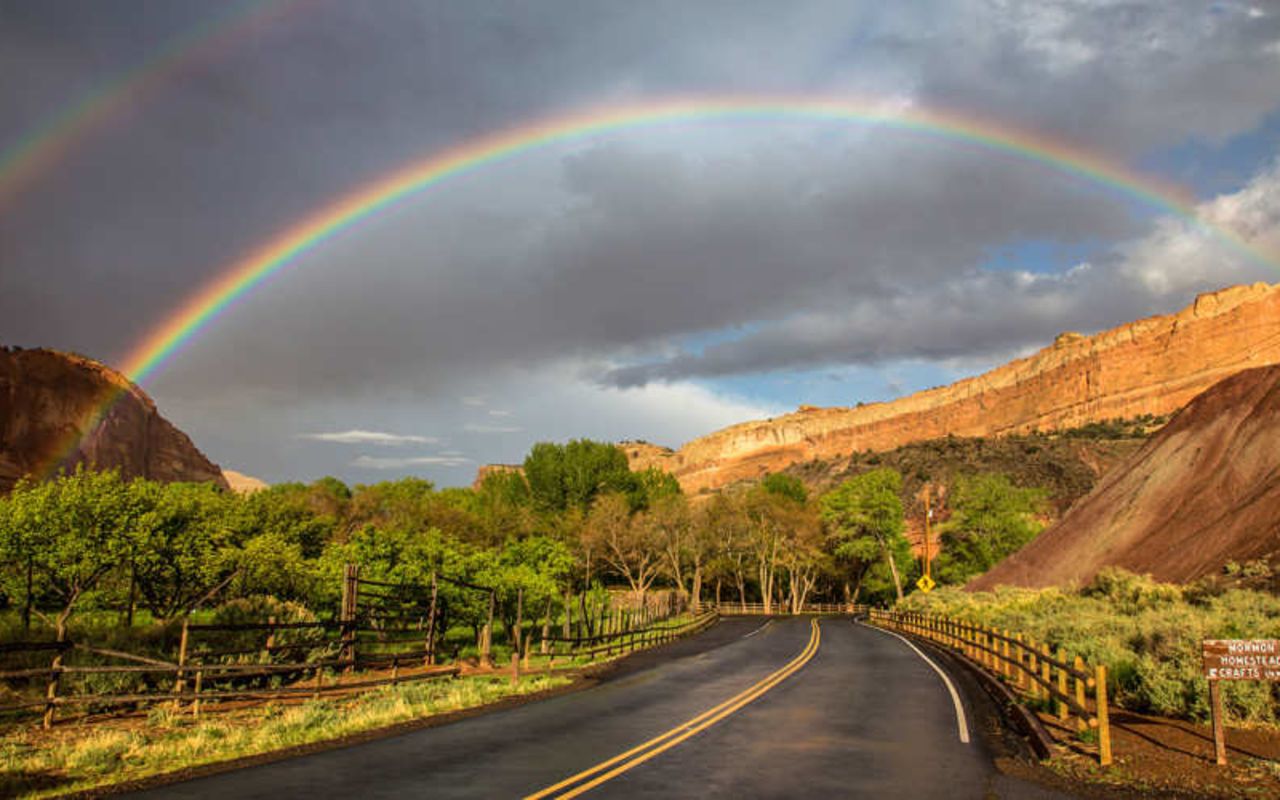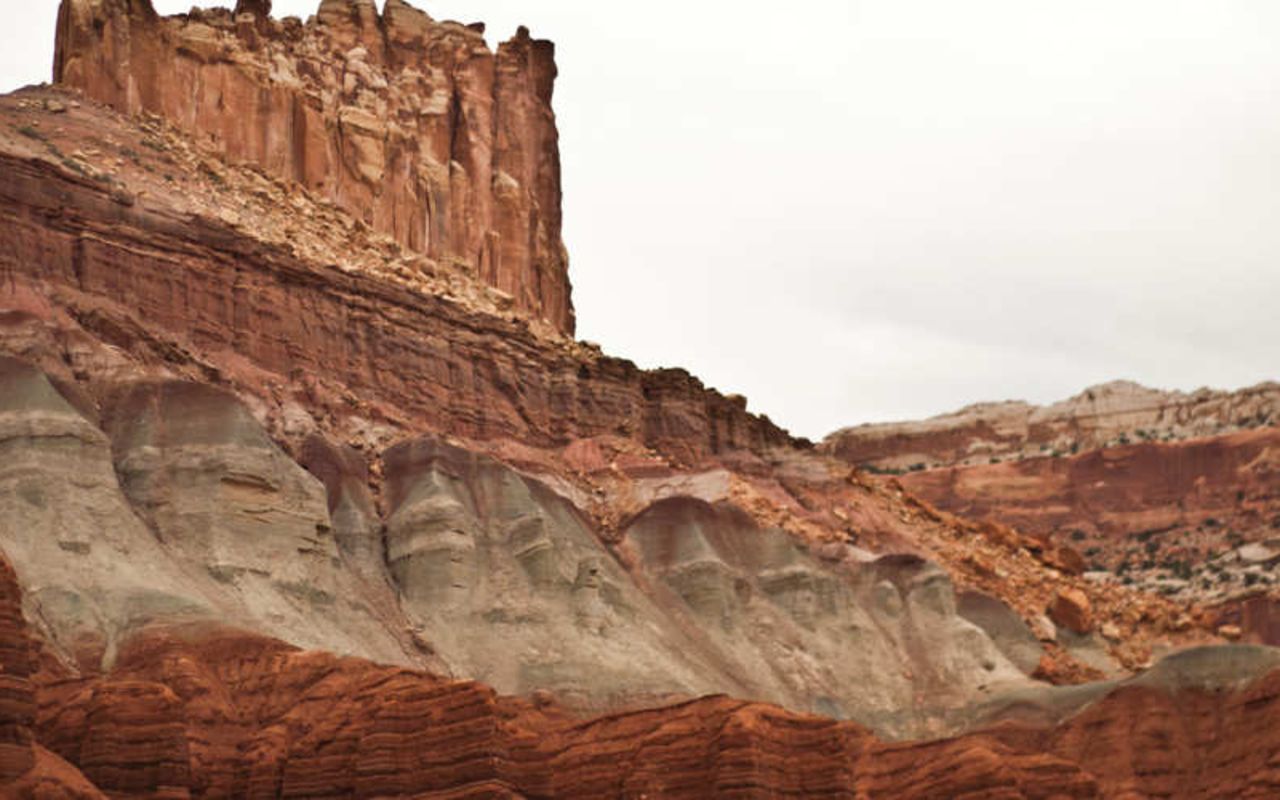Fruita
Of all the places in Utah for Mormons to create a community, Fruita might be one of the most difficult. Fronted by tens of thousands of square miles of desert, along a wild river prone to serious flooding, and in an area so remote that paved roads did not arrive until the 1960s, it is perhaps of little wonder Fruita, for most of its life, was home to no more than eight to 10 families.
Though Frederick Jackson Turner declared the frontier closed by 1890, Fruita was for all intents and purposes still on the frontier until National Monument status was given to the surrounding cliffs and canyons in 1937. Situated in south-central Utah, about 80 miles south and east of Richfield, Fruita today is the heart and administrative center of Capitol Reef National Park.
Fremont Indians frequented the area starting in the 700s, leaving behind rock art, pit houses and extensive irrigation canals. Whites, guided by Nels Johnson, straggled into this narrow valley between tall cliffs in 1880. Johnson built his house at the junction of the Fremont River and Sulphur Creek, now a park picnic ground. Mormon church leadership, wary of incoming 'gentiles' -- what Mormons call non-Mormons -- encouraged the settlement of far-flung locales such as Fruita and its valley. Mormons gradually settled from Cedar City and St. George eastward into the canyon country. Already settled in the cold and windy nearby Grassy and Rabbit valleys, Fruita's valley was a logical, if difficult, leapfrog.
Though it never comprised more than 300 acres Fruita -- originally called Junction -- became an important settlement due to its relatively long growing season and abundant water. Settlers from nearby Torrey and Loa -- which each have 90-day growing seasons -- arrived in Fruita and planted thousands of trees bearing Jonathan, Rome Beauty, Ben Davis, Red Astrachan, Twenty-Ounce Pippin and Yellow Transparent apples, Moorpark apricots, Elberta peaches, Bartlett pears, Fellenberg plums, and the Potawatomi plum. Settlers also planted English and black walnuts and almonds. Grape arbors appeared later. Around the turn of the century, with basic essentials taken care of, settlers turned towards constructing a school, stores and a small lodge.
In the early days Utah was a Mormon state, much in the same way that Israel is a Jewish state. But in the same respect, as not all Jews are practicing, not all Mormons were devout Mormons. Fruita, though borne of its Mormon roots, was spirited by frontier mentality. Though no Dodge City or Tombstone, Fruita operated sort of on the fringe of Mormon social culture -- the town, for example, never had a church, and moonshining was not uncommon. And if Fruita was on the edge of Mormonism, it was also on the edge of lawfulness: polygamists, fleeing federal agents, often found shelter in the nearby maze of canyons, aided by sympathetic locals. Too, Butch Cassidy maintained a hideout nearby.
When the surrounding canyons were protected by presidential decree in the 1930s, Fruita was forced to face the outside world. Locals went to work serving tourists or working for the Park Service. Beginning in the 1950s the government began to purchase private land within the monument's boundaries. Today, Fruita is a semi-preserved and well-managed historic district maintained by the National Park Service.
The historic district contains cabins, barns, the one-room schoolhouse and, of course, the orchards. Originally the domain of the settlers and usually containing several varieties of fruit, Fruita's 22 orchards are gradually being replanted with the goal of having just one type of fruit come from each orchard -- a move that will greatly simplify maintenance. Fruit trees begin to flower about April 1 and blooms last until May. Cherries are often the first fruit to ripen, becoming ready by the second week of June. Apricots can usually be picked in June and July, peaches and pears in August and September, and apples in September and October. Visitors may stroll through unlocked orchards and eat as much ripe fruit as they want, though fruit may not be picked in quantity until the designated harvest begins. Fees are charged for fruit picked and removed from the orchards, with prices being similar to those found in supermarkets. Signs listing fruit prices, scales, plastic bags and a self-pay station are at the entrance to open orchards. Hand-held fruit pickers and three-legged ladders are provided, though the Park Service urges the ladders be used with caution.

